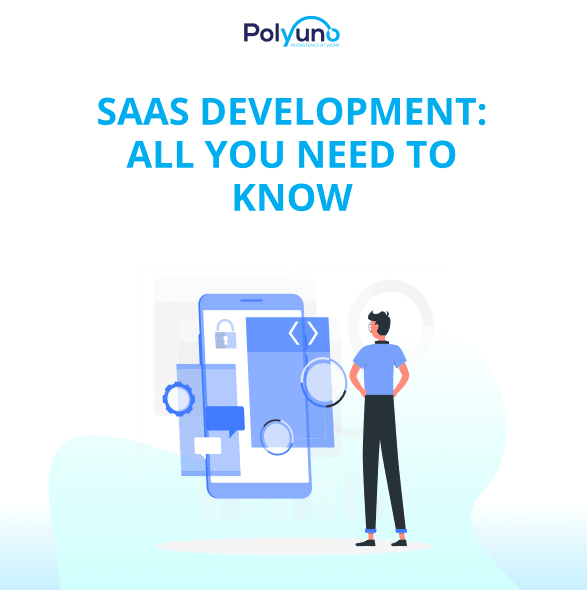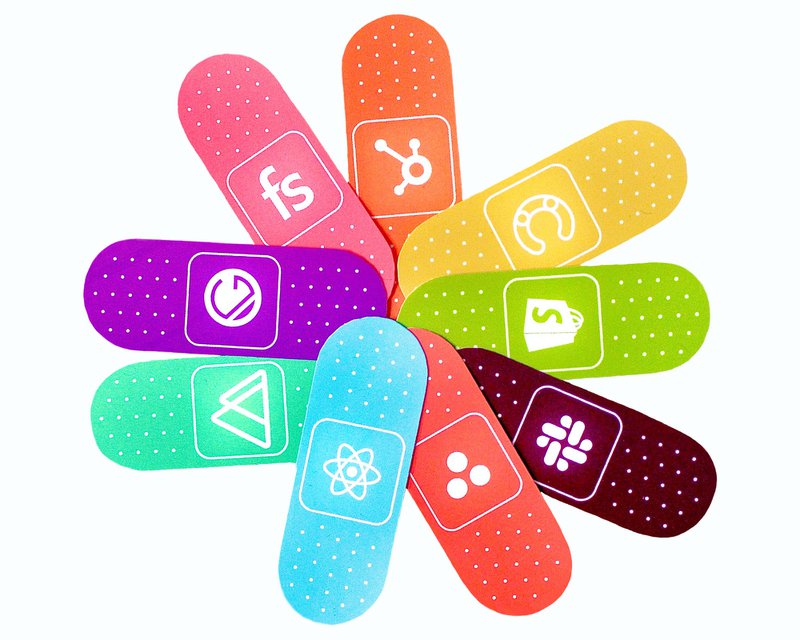
In recent years, Software as a Service or SaaS has been growing to become an ultimate solution to almost every software, replacing the traditional software licensing approach. In fact, did you know that as of 2020, the SaaS industry has become a multi-billion-dollar industry? It serves both the service providers and the end-users. So the question remains, how to do Saas Development?

Well, not to worry because we have researched for you and answered all the frequently asked questions regarding SaaS and its development. So without further ado, let's dive right in and discuss.
But first, let’s talk about what is SaaS? SaaS or Software as a Service is a cloud-based model of licensing and delivering software on a subscription basis. Simply put, it is a process where cloud providers host applications and deliver them over to the end-users through the internet. However, some offline SaaS models exist as well.
Remember when you had to install software and its updates through CDs and maintain them? With SaaS, companies do not hand over the licensing for a lifetime. Instead, it works on a subscription basis, and the provider works as a third-party host for the software.
SaaS Development consists of multiple processes that develop and maintain SaaS applications. It simply means the development of cloud-based software. That said, the process between product creation and execution is rather complex. So, a SaaS Developer is someone who works to improve web-based technologies.
While you can always outsource the service through a SaaS Development Company, you should still have a basic understanding of the process. That is why in this article, we go into depths to explain how each step of the development process works.
Software as a Service or SaaS comes with a few challenges that SaaS providers ought to take into consideration while developing the product.
The idea behind third-party integration is that you integrate an additional feature with your software. This third-party integration can be a Payment option, a Connection with CRM, Google Maps, etc. These require extra coding and research. Consequently, the final software may depend on the developmental costs.
That said, Payment system integration is one of the core development features of SaaS. While the development team can go for a ready-made payment option like PayPal, CashApp, and others, they can also create their personalized payment option.
So when you opt for a faster route, going for already available payment options is the best choice. However, you must test-run and analyze to ensure the compatibility level. On the other hand, if you want a payment system that will cater to your needs, you must ensure that your developers know their way around a secure payment system.
As we know by now, SaaS hosts applications in the Cloud. So, ensuring security is even more crucial. Since the SaaS platform is entirely cloud-based, it is crucial to ensure that the technology does not get exposed to the wrong hands. The developers you hire would have to meticulously check all the data encryptions to prevent the users from phishing attacks.
There are many Cloud security tools such as CWP or Cloud Workload Protection, CASB or Cloud Access Security Brokers, and many more. So apart from TLS and SSL encryptions that generally get used by data providers, these are some of the security tools that may want to invest in during the developmental stage.
Constant availability of the platform or Zero-Downtime Deployment means that the SaaS platform will be accessible to users even when a newer update gets added.
Sometimes when updates get added to websites, the previous model loses its workability. So those working with the older model of the websites face troubles managing their work. And this ultimately leads to dissatisfaction from the end-users.
So in order to solve this issue, developers must ensure constant accessibility of the SaaS platform. Even when updates are going on in the SaaS platform, the apps can run in the background.
The developmental process of SaaS applications differs from the traditional licensing technique and can generally seem daunting to those new to the field. That is why we have explained all the necessary processes to add to the developmental stage of the SaaS platform in a simplified manner.
One of the very first steps of the developmental process is doing research. Think of it as doing your homework. You do your research to understand the market demand of your product, the ongoing needs and expectations of customers, and what you bring to the table compared to your competitors.
Every developer aims to make the life of its end users simpler. So the research that gets done helps the developers understand the type of SaaS they need to develop. Thus, this leads you to analyze your own solutions and find the lackings.
Moreover, the analysis done on competitors helps you understand where your solutions stand in the market and how much the end-users will get out of it compared to the competitor's solutions. The things you would need to consider while comparing your SaaS product with your competitors are their UI/UX design, their monetization method, their feedback from customers, and their marketing strategies.
Now, this is the part of the developmental process where you decide on the MVP or Minimal Viable Product. Your MVP will reflect the type of product you want to deliver and how you want to do it. Thus, this process will allow you to decide the core proposition of your SaaS platform.
And in order to do that, you will need to analyze the market demand, consumer needs, and competitors. And this, in return, will allow you to have a much better understanding of the ways you can add value to the lives of your consumers. And this would lead you to have a clear concept of the type of product you want to design.
SaaS allows the optimization of the work process. So your design should allow the end-users the ability to use the application from any device. The model should represent the type that suits your business needs and the needs of your target customers simultaneously.
One of the most crucial steps of the developmental process of Software as a Service is finalizing the pricing model or the monetization method. This monetization method means the process you will be following to make money from your customers.
In this regard, there are different approaches that you can take regarding the pricing of your SaaS model. For instance, you could market your product free of charge for a trial run and then add a subscription basis. Apart from that, there also lies options such as Freemium and Usage-based pricing models.
However, the decision you make will not be permanent. As you upgrade your applications and add newer features, you can modify the pricing model as you want.
The overall success of your SaaS platform will depend on the way you design your product. The more it simplifies the work process for your end-users, and the more the UI/UX design adapted attracts them, the better.
The more you make the design user-friendly, the more it will please the customers. For instance, the subscription and unsubscription process of the SaaS application should not be complex and time-consuming.
The design team will create a dashboard, onboarding and navigation videos, and the sign-up process. Moreover, the design needs to be scalable in nature. And all of these will ensure an intuitive and positive experience for your target customers. That is why you need to hire an experienced design team, to perfect the design of your SaaS-optimized platform.
In such cases, platforms such as PolyUno can help you create your UI/UX design and develop the prototype to build the SaaS platform that your business requires. Here at PolyUno, we help you craft scalable and efficient software according to your preference and business type.
At this stage comes all the technicalities of the developmental process. That means you will be adding a technical stack according to the type of product you will be delivering. For this process of building client-facing and server-side components, you will need tools such as HTML + CSS, JavaScript, PHP, and many more. Apart from that, you will need to select servers for your SaaS platform.
So this is where you will decide your programming language and the matching cloud platforms, integrate the API, and add CDN or Content Delivery Networks to your process. All of this will help you design the end product just as you want and also allow you to expand to other countries seamlessly once your business makes a profit.
Moreover, you will also be integrating the security protocols in this stage. Since different countries follow different security protocols, you will need to ensure that your platform is in compliance with the regulations of every country it is operating.
Here you will be creating the Minimal Viable Product that you had previously conceptualized. A Minimal Viable Product will be the first demo product that you will be putting out in the market. So its feedback will give you an idea of the needed improvements.
Now, you can either hire developers of your own or outsource the process to a third-party company. Since the entire development process of the SaaS platform is quite complex, hiring a developer or outsourcing goes a long way. However, you do not need to hire developers if you are able to make long-term commitments to the maintenance of the product.
Once the Minimal Viable Product gets created, the developers will have to run it through different tests to evaluate the workability of the product. Thus, this process will allow developers to fix issues at hand before the product hits the market.
Moreover, running routine tests on the SaaS platform and maintaining the consistency of the performance is vital. Lastly, the developers will have to constantly add new features in order to keep the customers interested. Remember that the more you can keep up with the latest trends and make the experience enjoyable for your users, the more referrals for your company.
Last but not least, you need a reliable and constant provider of Cloud since the entire procedure of the SaaS apps gets done through Cloud computing. Companies such as AWS, Google Cloud, and many more are the go-to providers for Cloud.
Now, keep in mind that the pricing will differ based on the complexity of the features that you are developing. Moreover, different developmental teams will ask for different price ranges depending on their level of expertise.
As we have mentioned before, SaaS development works the best for companies with a subscription-based plan. Companies that like to maintain centralized updates and features may work the best with SaaS in terms of optimizing the workflow. Remember that choosing the right developers for your SaaS platform is as important as having a thought-out concept. Lastly, always make sure that you develop each product with the purpose of sufficing the needs of your customers. At the end of the day, the greater the user experience you deliver, the more success for you.
Looking for an effective tool to do SaaS development for your business? You can give PolyUno a shot. Book a call today to help your brand develop and transform your digital journey.